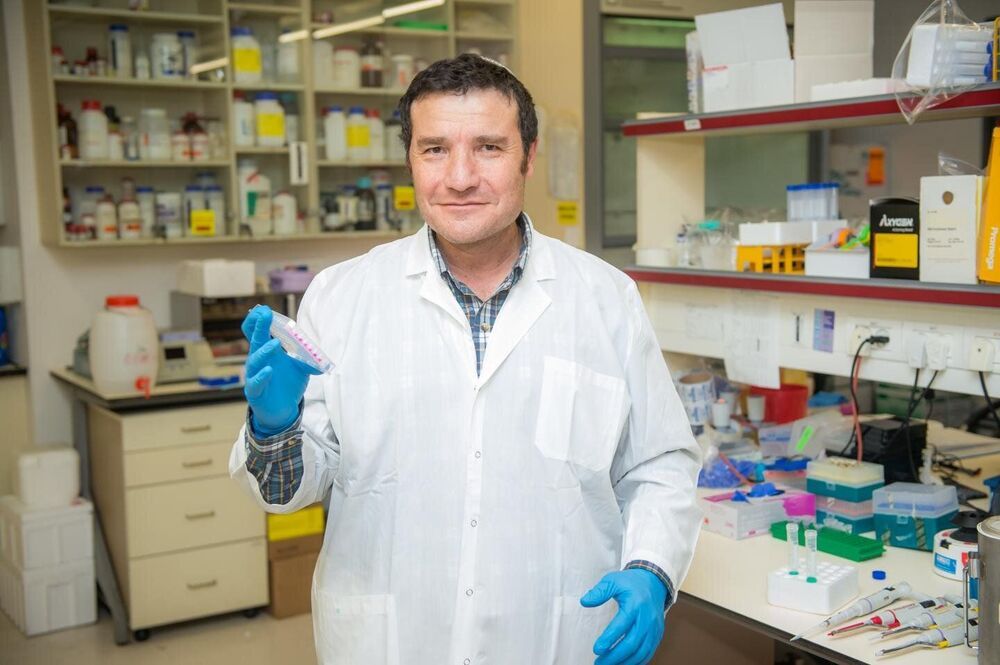In a new study published in ‘Nature’, scientists have discovered a major hallmark of the aging process and how to reverse the accompanying cognitive decline.



I imagine it would pool into two groups: one made up of ivory tower PhDs quibbling over their latest studies, and one made up of conspiracists who are a little too quick to conflate science with magic.
Affiliate Disclaimer: Longevity Advice is reader-supported. When you buy something using links on our site, we may earn a few bucks.
Update 6/7/2021: This post has been updated since we originally published it in August 2020. Several new longevity life extension blogs have been added and one that is no longer active has been removed.
What would the longevity community look like without life extension blogs?

Mark my words. When the first real treatment happens people will change their tune. They need to see it work and see that it’s safe.
A new study of about 900 U.S. adults has found that only 33% would use a hypothetical life extension treatment that would allow them “to live forever,” even if it were available today. About 42% said they would not use it, and 25% said they were unsure.
The study, published by University of Texas researchers Michael Barnett and Jessica Helphrey, appeared in the Journal of Aging Studies on April 21.
Don’t worry you haven’t stumbled onto that strange part of the internet again, but it is true that we never truly did sequence the entire Human genome. For you see what was completed in June 2000 was the so called ‘first draft’, which constituted roughly 92% of genome. The problem with the remaining 8% was that these were genomic ‘dead zones’, made up of vast regions of repeating patterns of nucleotide bases that made studying these regions of the genome effectively impossible with the technology that was available at the time.
However, recent breakthroughs in high throughput nanopore sequencing technology have allowed for these so call dead zones to be sequences. Analysing these zone revealed 80 different genes which had been missed during the initial draft of the Human genome. Admittedly this is not many considering that the other 92% of the genome contain 19889 genes, but it may turn out that these genes hold great significance, as there are still many biological pathways which we do not fully understand. It is likely that many of these genes will soon be linked with what are known as orphan enzymes, which are proteins that are created from an unidentified gene, which is turn opens up the door to studying these enzymes more closely via controlling their expression.
So how does this discovery effect the field of regenerative medicine? Well the discovery of these hidden genes is potentially very significant for our general understand of Human biology, which in turn is important for our understanding of how we might go about fixing issues which arise. Possibly more important that the discovery of these hidden genes, is the milestone this sequencing represents in our ability to study our genomes quickly and efficiently with an all-inclusive approach. The vast amount of data that will soon be produced via full genome analysis will go a long way towards understanding the role that genetics play in keeping our bodies healthy, which in turn will allow us to replicate and improve upon natural regenerative and repair mechanisms. It might even allow us to come up with some novel approaches which have no basis in nature.
Papers referenced in the video:
Sirtuins, Healthspan, and Longevity in Mammals.
https://www.sciencedirect.com/science/article/pii/B9780124115965000034
Sirt1 extends life span and delays aging in mice through the regulation of Nk2 homeobox 1 in the DMH and LH
https://pubmed.ncbi.nlm.nih.gov/24011076/
Resveratrol improves health and survival of mice on a high-calorie diet.
https://pubmed.ncbi.nlm.nih.gov/17086191/
Rapamycin, But Not Resveratrol or Simvastatin, Extends Life Span of Genetically Heterogeneous Mice.
https://pubmed.ncbi.nlm.nih.gov/20974732/
Sirt1 improves healthy ageing and protects from metabolic syndrome-associated cancer.

Enrolling Tens Of Thousands Of Dogs, In 10-Year Study, To Unlock Healthy Aging Secrets — Dr Matt Kaeberlein, Founder / Co-Director, The Dog Aging Project, Professor, University of Washington, joins me on Progress, Potential, And Possibilities Nathan Shock Centers #Rapamycin #Dogs #Aging #Longevity #Healthspan #Geroscience.
#MitochondrialDisease
Dr. Matt Kaeberlein is Professor of Pathology, Adjunct Professor of Genome Sciences, and Adjunct Professor of Oral Health Sciences, at the University of Washington.
Dr. Kaeberlein received his PhD from MIT in Biology, did his post-doc in the Department of Genome Sciences, University of Washington, and his research interests are focused on basic mechanisms of aging in order to facilitate translational interventions that promote healthspan and improve quality of life.
Dr. Kaeberlein has published nearly 200 papers in top scientific journals and has been recognized by several prestigious awards, including a Breakthroughs in Gerontology Award, an Alzheimer’s Association Young Investigator Award, an Ellison Medical Foundation New Scholar in Aging Award, a Murdock Trust Award, a Pioneer in Aging Award, and the Vincent Cristofalo Rising Star in Aging Research.
The latest from Calico. A bit technical.
Reprogramming of ordinary somatic cells into induced pluripotent stem cells (iPSCs) was initially thought to be a way to obtain all of the patient matched cells needed for tissue engineering or cell therapies. A great deal of work has gone towards realizing that goal over the past fifteen years or so; the research community isn’t there yet, but meaningful progress has taken place. Of late, another line of work has emerged, in that it might be possible to use partial reprogramming as a basis for therapy, delivering reprogramming factors into animals and humans in order to improve tissue function, without turning large numbers of somatic cells into iPSCs and thus risking cancer or loss of tissue structure and function.
Reprogramming triggers some of the same mechanisms of rejuvenation that operate in the developing embryo, removing epigenetic marks characteristic of aged tissues, and restoring youthful mitochondrial function. It cannot do much for forms of damage such as mutations to nuclear DNA or buildup of resilient metabolic waste, but the present feeling is there is nonetheless enough of a potential benefit to make it worth developing this approach to treatments for aging. Some groups have shown that partial reprogramming — via transient expression of reprogramming factors — can reverse functional losses in cells from aged tissues without making those cells lose their differentiated type. But this is a complicated business. Tissues are made up of many cell types, all of which can need subtly different approaches to safe reprogramming.
Today’s open access preprint is illustrative of the amount of work that lies ahead when it comes to the exploration of in vivo reprogramming. Different cell types behave quite differently, will require different recipes and approaches to reprogramming, different times of exposure, and so forth. It makes it very hard to envisage a near term therapy that operates much like present day gene therapies, meaning one vector and one cargo, as most tissues are comprised of many different cell types all mixed in together. On the other hand, the evidence to date, including that in the paper here, suggests that there are ways to create the desired rejuvenation of epigenetic patterns and mitochondrial function without the risk of somatic cells dedifferentiating into stem cells.


Aging is associated with an overall decline in health and increased frailty, and is a major risk factor for multiple chronic diseases. Frailty syndrome, characterized by weakness, fatigue and low physical activity, affects more than 30% of the elderly population. Increasing our understanding of the mechanisms underlying the aging process is a top priority to facilitate the development of interventions that will lead to the preservation of health and improvements on survival and lifespan.
Cumulative evidence suggests that diet and metabolism are key targetable regulators of healthy lifespan. Prof. Haim Cohen, Director of the Sagol Healthy Human Longevity Center at Bar-Ilan University, focuses much of his research on the SIRT6 protein that is involved in regulating many biological processes, such as aging, obesity, and insulin resistance.
In a study just published in the journal Nature Communications, an international team led by Cohen and his Ph.D. student Asael Roichman—together with Prof. Rafael de Cabo, of the National Institute on Aging at the National Institutes of Health, Prof. Manuel Serrani, of the Institute for Research in Biomedicine in Barcelona, and Prof. Eyal Gottlieb from the Technion—report that transgenic mice express high levels of the SIRT6 gene, and show that their life expectancy can be increased by an average of 30% in both males and females. Translated into human terms this means that a 90-year-old could live until nearly 120!